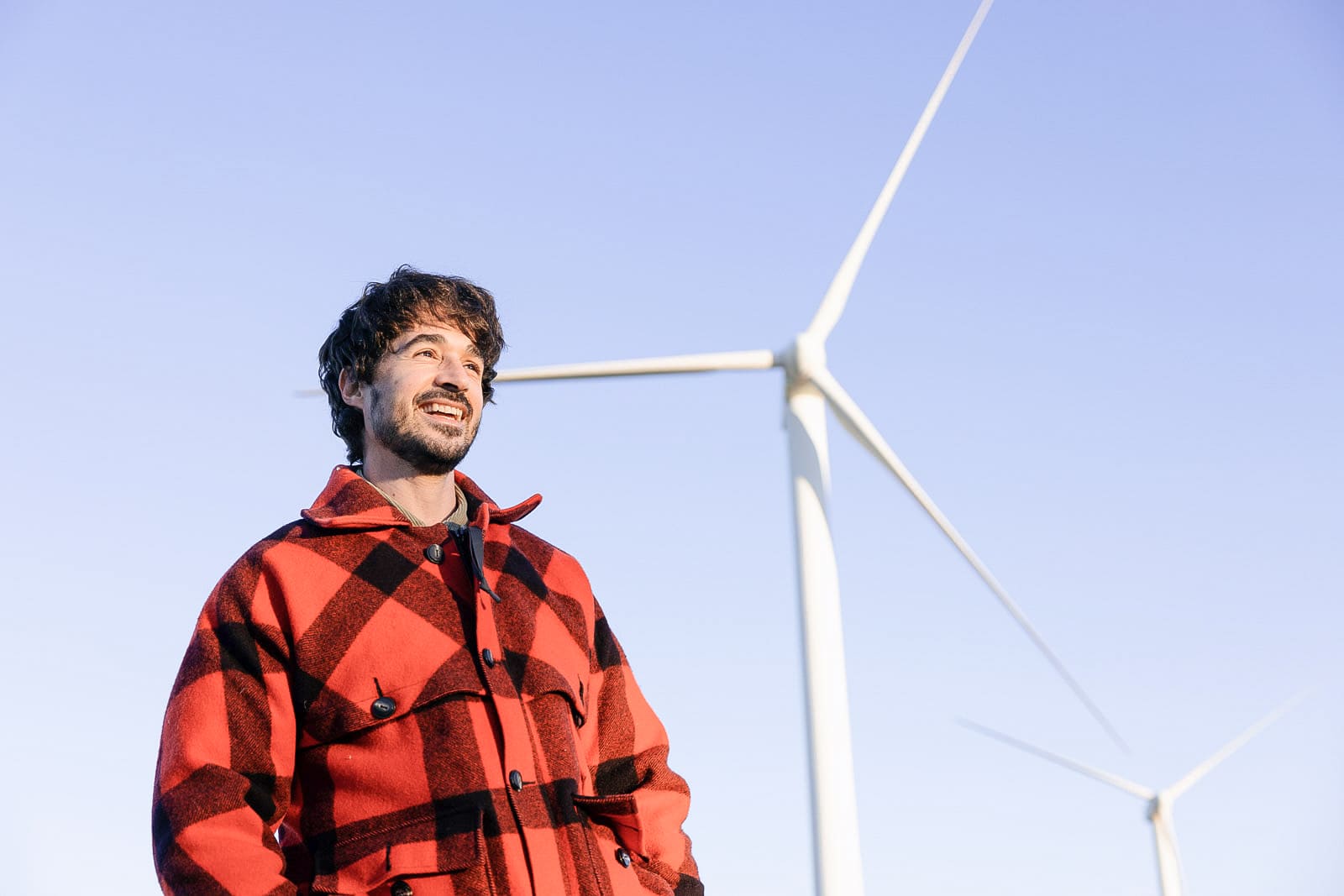27.10.2022 | Why we urgently need more agrophotovoltaics in Switzerland
Solar power above - strawberries below
Since the passing of the Energy Strategy 2050, at the latest, it has been clear that the use of renewable energies must increase as quickly as possible. Solar energy plays a central role in Switzerland, because it has the greatest growth potential. This also applies to agrophotovoltaics, i.e. ground-mounted solar plants on agricultural land. All that is needed now is a better legal framework for their expansion.
By 2050, the Federal Council wants to produce 40 percent of Switzerland's electricity needs from solar power. In order to achieve this goal, new high-performance ground-mounted solar plants must be built. An interesting solution here is agrophotovoltaics, i.e. the combination of agriculture and photovoltaics. This type of solar plant makes twofold sense.
How agrophotovoltaics works
The principle of agrophotovoltaics (agri-PV) is simple: agri-PVs are solar installations on agricultural land that generate electricity from the sun's rays above, while potatoes, barley or strawberries grow below. The land below can also be used as grassland for cows and sheep. This combination not only leads to more solar power, but also favours biodiversity and preserves resource conservation in agriculture. Since the photovoltaic modules cast shade on the seeds below, the need for irrigation can be reduced and the harvest can even thrive better (cf. ZHAW 2021).
In addition to ecology, however, Agri-PV also favours acceptance over ground-mounted solar systems, as they do not block any land, but merely cover an area that is already in use. This type of solar energy saves space and no agricultural land is wasted. A win-win situation, indeed (cf. ZHAW 2021).
Strong expansion of solar power
In the meantime, numerous agro-photovoltaic plants with a total capacity of 14 GW are already in use around the world (cf. Fraunhofer Institute for Solar Energy Systems ISE 2022). In Switzerland, too, many corresponding projects are currently being launched. At the end of 2021, the total domestic solar electricity covered 4.89 percent of the Swiss electricity demand (cf. BFE 2022). There are currently around 140,000 installed solar systems in Switzerland, producing 3.3 TWh of electricity (cf. UVEK 2022). With the Energy Strategy 2050+, the Federal Council decided in 2021 to increase PV production fivefold to 14 TWh by 2035. By 2050, another 20 TWh are to be produced. This means that solar electricity should ultimately cover a good 40 percent of Switzerland's electricity demand by 2050.
Switzerland uses Agri-PV for berries and lettuce
Although most Agri-PV plants are currently still located in Asia, pilot plants are being built in Europe and increasingly also in Switzerland. Since 2021, for example, there has been the pilot plant of the federally owned research institute Agroscope in Conthey (VS), which covers 165 m² of strawberry and raspberry plants with modules from the French-Swiss start-up Insolight. The first harvest in autumn 2021 was pleasing. According to the research group, the quality of the fruits and their size were excellent (cf. Baublatt 2022).
In the German-speaking part of Switzerland, the ZHAW demonstrated in its own trial facility in Wädenswil that sweet lettuce grows better under solar panels.
Another form of Agri-PV are solar systems on greenhouses. Axpo has extensive experience with such solar systems through its subsidiary Urbasolar in France. Already 20 greenhouses have been equipped with solar modules, and ten more PV systems on greenhouses are under construction or in development. Read more here.
The potential is consequently there, now it is only a question of the legal feasibility of open-space Agri-PV. These have just been deregulated, but the construction of Agri-PVs is only possible if they bring about advantages for agricultural production in less sensitive areas or serve appropriate experimental and research purposes (cf. Spatial Planning Ordinance, Art. 32 c RPV).
Current law now also allows certain ground-mounted PV systems outside the building zone
Since the revision of the Spatial Planning Ordinance, which has been in effect since July 2022, things have looked better for agri-PV. Solar installations are now also permitted over green areas, but subject to conditions. For example, the systems had to be located in less sensitive areas and offer advantages for agriculture or serve experimental and research purposes. However, open-space PV systems in the agricultural zone that do not increase agricultural production, e.g. on unused steep slopes, are still not eligible for approval (cf. Swisssolar 2022).
In the autumn session 2022, the Council of States discussed amendments to the Spatial Planning Act in the course of the so-called "Mantelerlasses", i.e. the revision of the Electricity Supply Act and the Energy Act, which aims to strengthen the permissibility of PV systems in agricultural zones and outside building zones. Agri-PV systems are to be permitted if they serve the "agricultural interest". Solar plants outside building and agricultural zones should be possible in areas that are not very sensitive and are easy to develop. The decree will be discussed in the National Council next year.
Alpine solar plants for more winter electricity
Large alpine PV systems can also make a significant contribution to the supply of electricity in the winter months, which Parliament has made possible by means of an urgent resolution. It is to be welcomed that such plants are considered site-specific and of fundamentally overriding national interest. However, the regulations are limited until the end of 2025 and it must be ensured that the licensability of renewable installations is also improved in the medium to long term.
The approval procedures remain the central challenge in the realisation of corresponding projects. Further steps to speed them up are urgently needed. It is in the hands of politicians how Switzerland's energy production develops. Axpo remains committed to ensuring that large-scale solar plants (Agri-PV / open space / Alpine solar) can also become fully established in Switzerland.
Dynamic development
Agrophotovoltaics (Agri-PV) is the simultaneous use of land for agricultural crop production (photosynthesis) and PV electricity production (photovoltaics). Agri-PV covers a broad spectrum in the intensity of agricultural use and in the additional effort required for PV system construction. It ranges from intensive arable farming with special PV mounting systems to extensive grazing with marginal adjustments on the PV side. Agri-PV thus increases land efficiency and makes it possible to expand PV power while preserving fertile arable land for agriculture or in connection with the creation of species-rich biotopes.
Agri-PV technology has developed very dynamically in recent years and has spread to almost all regions of the world. Globally installed Agri-PV capacity increased exponentially from about 5 MW in 2012 to 14 GW in 2022, with government support programmes in Japan (since 2013), China (about 2014), France (since 2017), the USA (since 2018) and most recently Korea.







